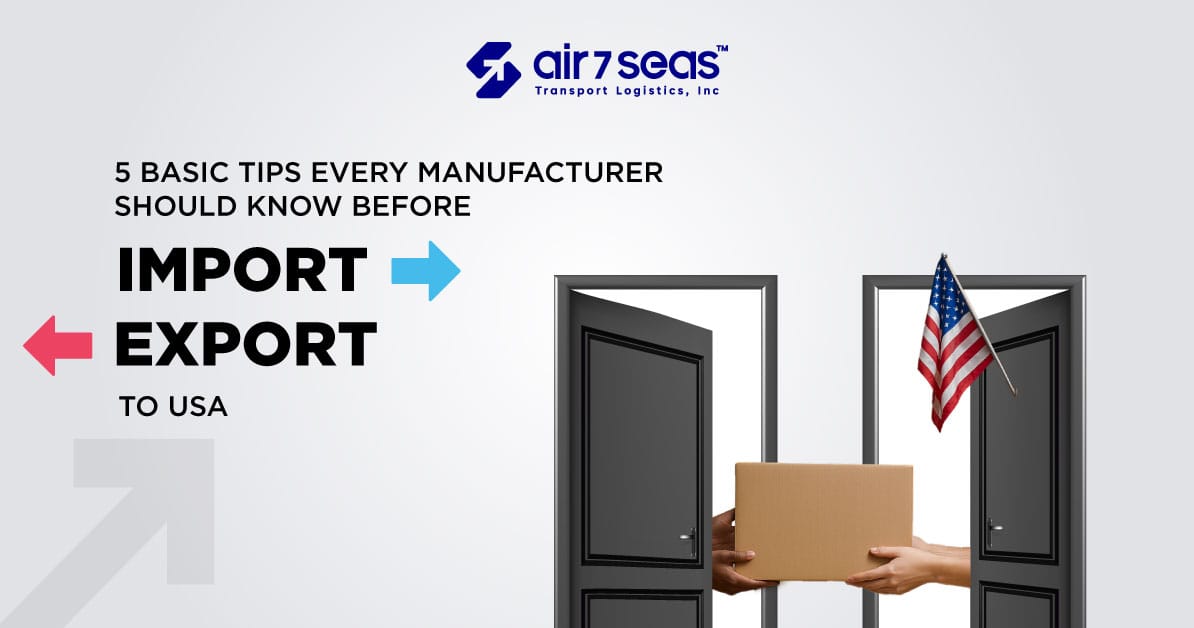
Starting your import/export journey to the USA can feel overwhelming, but understanding the fundamentals of importing and exporting goods is crucial for manufacturing success.
Here are the essential tips that will save you time, money, and headaches from day one.
1. Get Your Documentation Right from the Start
What You Need to Know:
- The most common reason for shipment delays is incorrect or missing paperwork. US Customs requires specific documents for every shipment, and even small errors can hold up your goods for weeks.
Essential Documents for Every Shipment:
- Commercial Invoice: Must show exact product descriptions, quantities, and values
- Packing List: Details what's in each box or container
- Bill of Lading: Your shipping receipt and proof of ownership
- Import/Export License: Required for certain products and countries
Pro Tip: Always use the same product descriptions across all documents. If your invoice says "electronic components" but your packing list says "circuit boards," customs will flag it for review.
Quick Action: Create a document checklist template and have someone double-check every shipment before it leaves. This simple step prevents 80% of documentation delays.
2. Understand the True Cost of Shipping
What You Need to Know:
- The price you pay your supplier is just the beginning. Many manufacturers get shocked by hidden costs that can add 20-40% to their total expense.
Your Real Shipping Costs Include:
- Product cost from supplier
- International freight (ocean/air shipping)
- Import duties and taxes (varies by product type)
- Customs clearance fees
- Insurance and handling charges
- Delivery to your warehouse
Example: If you buy $10,000 worth of goods, your true landed cost might be:
Money-Saving Tip: Always ask for a "landed cost quote" that includes all fees upfront. This helps you budget accurately and avoid surprises.
3. Choose the Right Shipping Method for Your Business
What You Need to Know:
- There's no one-size-fits-all shipping method. Your choice depends on your timeline, budget, and product type.
Ocean Freight (Slowest but Cheapest):
- Best for: Large quantities, non-urgent shipments
- Timeline: 15-45 days depending on origin
- Cost: Lowest per unit
- When to use: Regular inventory replenishment
Air Freight (Fastest but Most Expensive):
- Best for: Urgent shipments, high-value small items
- Timeline: 3-7 days
- Cost: 5-10x more than ocean
- When to use: Emergency restocking, product launches
Ground/Truck (For North American Trade):
- Best for: Trade with Canada/Mexico
- Timeline: 1-5 days
- Cost: Mid-range
- When to use: Regular shipments from neighboring countries
Smart Strategy: Use ocean freight for 80% of your regular shipments and air freight for urgent needs. This balances cost and flexibility.
4. Partner with the Right Professionals
What You Need to Know:
- Trying to handle import/export alone is like doing your own surgery technically possible but not recommended. The right partners will save you more money than they cost.
Key Partners You Need:
- Customs Broker: Handles paperwork and customs clearance
- Freight Forwarder: Manages shipping and logistics
- International Trade Attorney: For complex compliance issues
- Insurance Agent: Protects your cargo during transit
How to Choose Good Partners:
- Ask for references from other manufacturers in your industry
- Verify their licenses and certifications
- Start with small shipments to test their service
- Make sure they communicate clearly and respond quickly
Red Flags to Avoid:
- Partners who promise "no problems ever"
- Extremely low prices (often means hidden fees later)
- Poor communication or delayed responses
- No proper licensing or insurance
Investment Tip: Good partners typically cost 2-5% of your shipment value but can save you 10-20% through proper planning and problem prevention.
5. Plan for Delays and Problems
What You Need to Know:
Even perfect shipments can face unexpected delays. Weather, port congestion, customs inspections, and documentation reviews are part of international trade.
Common Delays and Timeline Impact:
- Customs Inspection: +3-7 days
- Missing Documents: +5-14 days
- Port Congestion: +3-10 days
- Weather Delays: +1-5 days
- Holiday Shutdowns: +3-7 days
Smart Planning Strategies:
- Buffer Time: Add 25% extra time to all shipping estimates
- Safety Stock: Keep 30-60 days of inventory for critical items
- Multiple Suppliers: Don't rely on just one source for important products
- Backup Plans: Know alternative shipping routes and methods
Communication is Key:
- Set realistic expectations with your customers
- Provide tracking information and regular updates
- Have a plan for communicating delays quickly
- Keep extra inventory during peak seasons (holidays, Chinese New Year)
Crisis Management: When problems happen (and they will), quick communication and flexible solutions turn frustrated customers into loyal ones.
The Bottom Line
Import/export success comes down to preparation, partnerships, and realistic planning. Start small, learn from each shipment, and gradually build your international trade capabilities.
Remember: every successful manufacturer started with their first international shipment. The key is to begin with solid fundamentals and improve as you gain experience.
Ready to Start? Focus on getting these five basics right, and you'll avoid the most common mistakes that trip up new importers and exporters. Your future self (and your bank account) will thank you for taking the time to do it right from the beginning.
Want to discuss your specific import/export needs? AIR 7 SEAS are specialists who work exclusively with US manufacturers. We'll provide a free consultation to assess your requirements and develop a customized logistics strategy for your business.

